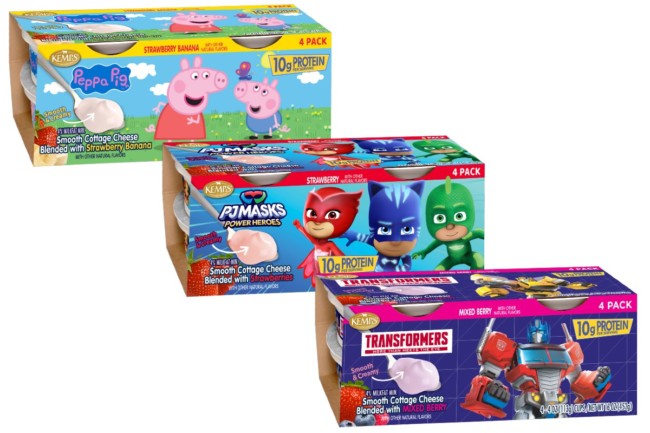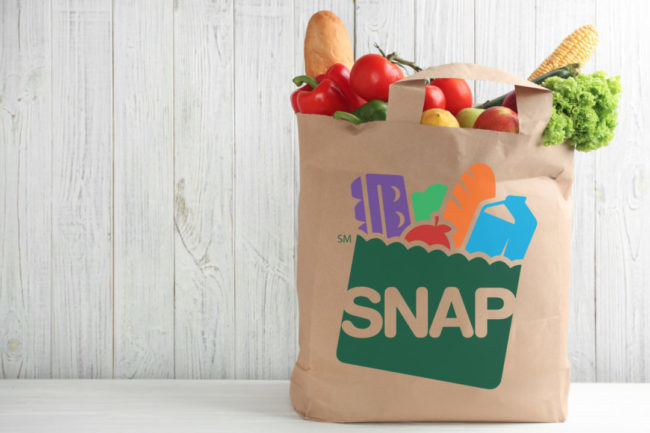It’s well documented that dairy foods are an important source of nutrients for growing children and teens, but also for people in all stages of life, including adults, seniors and athletes.
Dairy and dairy-containing foods contribute many essential nutrients, including protein, calcium, vitamin D, vitamin A, vitamin B12, riboflavin, niacin, phosphorus and magnesium. The high potassium content of dairy foods can also help lower blood pressure. Both full-fat and non/low-fat dairy foods can be good sources of protein, calcium, B vitamins, and vitamin D. Dairy foods that undergo fermentation, such as yogurt and some cheeses, are lower in lactose and contain gut bacteria that may benefit digestive health, according to research published by Harvard’s T.H. Chan School of Public Health.
Nutrient-dense dairy foods are also a core part of healthy eating patterns and dietary guidance recommendations around the world, including the Dietary Approaches to Stop Hypertension (DASH) eating plan, four heart health-focused eating plans from the American Heart Association and diabetes management-focused eating plans from the International Diabetes Federation.
The Food and Agriculture Organization (FAO) highlights dairy as a way to help people across populations meet the body’s needs for essential nutrients. In the US, milk is the number one food source for calcium, vitamin D and potassium in the diets of adults and children; cheese is the number two food source of calcium, after milk.
Accessible nutrition
Danone North America, Broomfield, Colo., and White Plains, NY, released its State of Nutrition Equality Study which analyzed the attitudes, beliefs and expectations around food and nutrition access of more than 4,000 Americans, across ethnicity, region, age and income level.
The study found that most Americans (60%) do not eat what they would describe as very nutritious foods, due to significant economic and physical barriers. Those surveyed believe these gaps have a ripple effect, impacting their families, communities and the country at-large, where diet-related diseases currently lead to more than one million preventable deaths annually.
The study findings come amid continued economic pressures, and as expanded pandemic-era Supplemental Nutrition Assistance Program (SNAP) benefits are ending, causing as many as 15 million people to lose coverage in the coming months.
“Danone believes in a future where nutrition is more available, accessible and equitable — our vision is for a more inclusive state of nutrition where consumers have agency over their health, through food,” said Shane Grant, group deputy chief executive officer, Danone. “Our mission is to bring health through food to as many people as possible, but we cannot act alone. Improving nutrition equality at scale will require partnership across sectors for transformational change.”
A focus on kids
In 2020, the federal Dietary Guidelines Advisory Committee report found that 79% of 9- to 13-year-olds were not meeting the recommended intake of dairy foods. In their comments to United States Department of Agriculture (USDA), the International Dairy Foods Association (IDFA) and National Milk Producers Federation (NMPF) noted that school children of all ages are falling short of these recommendations, and they rely on school meals to meet their nutritional needs.
Highlighting dairy’s role in school meals, a recent survey found 92% of voters with children in public schools think that providing milk to students is important for children’s daily nutritional intake.
Data from the national tracking poll, conducted by Morning Consult, also showed that 91% of those parents think making sure school meals are healthy and nutritious for children in their community should be prioritized. Within that group, 62% of parents who participate in the Special Supplemental Nutrition Program for Women, Infants and Children (WIC) said it should be a top priority.
Commissioned by IDFA, the survey found 84% of parents, upon receiving messaging about nutritional and health benefits of milk, supported low-fat flavored milk being an option in public school meals, as well.
IDFA president and CEO Michael Dykes called school meals “the bedrock of nutrition security” for children, especially among families in need.
“This polling underscores that parents understand the importance of school meals, that they believe healthy school meals should be a priority for policymakers and that they understand the important role dairy products like milk play in ensuring their children receive the nutrients they need for growth, development, healthy immune function and overall wellness,” Dykes said.
The IDFA is advocating for US policymakers to boost dairy consumption among children through school meals.
In April, IDFA announced the establishment of the Healthy School Milk Commitment on behalf of US milk processors. The pledge by dairy companies commits to delivering milk’s nutrients to America’s students while reducing calories and added sugars in flavored milk.
Beginning with the 2025-2026 school year, 37 school milk processors, representing more than 90% of the school milk volume in the US, committed to providing school milk options with no more than 10 grams of added sugar per 8 fluid oz serving, fully consistent with the latest federal Dietary Guidelines for Americans and ahead of current school meal nutrition guidelines established by the USDA.
 Images: Kemps
Images: Kemps
Beyond school, a number of dairy processors have developed products aimed at kids to help provide nutrient dense foods.
Dairy Farmers of America-owned Kemps, St. Paul, Minn., took the curds out of cottage cheese and added blended fruit — creating a dairy product similar to yogurt — for its new Smooth Cottage Cheese for kids.
The newly launched products contain close to twice as much protein per ounce as most yogurts, per Kemps. Their ingredients include 4% whole milk cottage cheese, real fruit and probiotics, with no high fructose corn syrup.
“At Kemps, we are always looking for ways to meet consumer needs and know parents are seeking nutritious options that are kid approved,” said Nathaniel Renteria, senior brand manager for the company. “This new cottage cheese has a smooth and creamy texture, with no curds, and is blended with real fruit flavors, so it’s really more like a yogurt, which we know kids love.”
Horizon Organic, Broomfield, Colo., introduced its Growing Years line in 2019, with products created specifically for children ages 1 to 5. Developed in partnership with pediatricians, every 8 oz serving of Growing Years contains DHA Omega-3 to support brain health, choline to transport DHA in the body, prebiotics for gut health, and vitamin D and calcium.
New challenges
In 2023, The USDA proposed dropping by as much as 25% the amount of milk that mothers and children can receive each month through WIC. More than 6 million low-income mothers and children, including an estimated 43% of all infants in the US rely on WIC each month, according to the USDA’s Economic Research Service. The USDA says the cuts are “science-based” recommendations by the independent National Academies of Science, Engineering, and Medicine. However, the USDA also reports 90% of Americans don’t get enough dairy and some believe the cut could exacerbate that and have lasting negative effects on the health of children and women.
A national tracking poll commissioned by IDFA and conducted by Morning Consult involved 534 WIC participants and found that 20% of participants in the WIC program would not re-enroll if the USDA makes its proposed cuts to WIC benefits for milk and dairy purchases. Another 34% said they were unsure whether they would re-enroll in WIC following the proposed cuts.

In response, a bill was introduced in the US Senate for the Dairy Nutrition Incentives Program Act, bipartisan legislation to increase access to nutritious dairy products for SNAP participants. The program would provide a dollar-for-dollar match when purchasing nutritious dairy products.
“In this time of chronic food insecurity, it is critical that we find new ways to improve access to foods that nourish and promote good health and well-being, particularly for our nation’s most food-insecure individuals,” Dykes said.
IDFA shared that the Dairy Nutrition Incentives Program would expand the Healthy Fluid Milk Incentive projects established by the 2018 Farm Bill, to include nutritious dairy products such as cheese and yogurt.
“The program would build on the early learnings of the Healthy Fluid Milk Incentive projects to provide SNAP participants with incentives where and when they can be most effective for encouraging consumption of healthy dairy products,” Dykes said. “It would also ensure the program can continue to expand to additional areas of the country, particularly in areas of most need.”
Upcoming webinar
Recent research supports the role that dairy protein plays in maintaining fitness, weight management and healthy aging, as well as essential nutrients to maintain healthy gut and immune function. These topics will be the heart of Dairy Processing’s upcoming webinar, “Dairy’s role in health and nutrition,” which will happen live on Sept. 20 at 2 pm EST.
Moderated by Dairy Processing managing editor Kristen Putch, the discussion with National Dairy Council senior vice president Dr. Katie Brow, Dairy Council of California nutrition science officer Ashley Rosales, and registered dietitian and clinical nutrition expert Lauren Twigge will focus on the health benefits of dairy products, educating consumers and how processors can leverage dairy’s inherent nutritional value.
Registration for the free webinar is available online.

